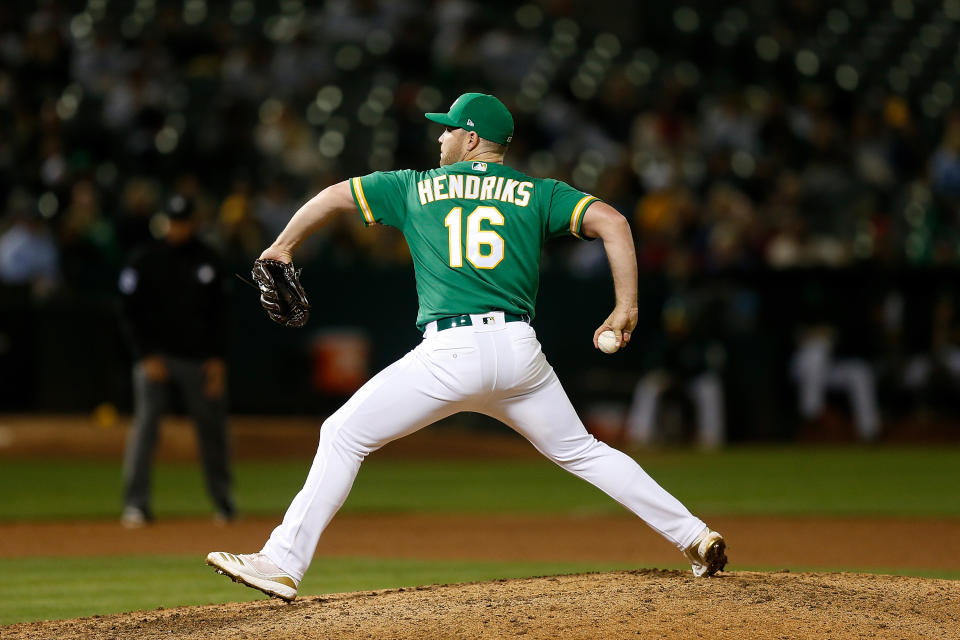Fantasy baseball pitching strategy for 2020: Let's get weird
In the entirety of professional baseball history, dating back to Al Spalding's 19-win season for the Boston Red Stockings in 1871, the lowest league-leading win total by any pitcher was 14. When a seven-week work stoppage disrupted the 1981 season, five pitchers managed to win 14 games to finish in a tie for the lead.
This year, assuming each team completes its full 60-game schedule, the wins leader in MLB will probably finish with only seven or eight. Nine wins would really require a phenomenal effort. Starters are going to appear in no more than 12 or 13 games. Even if some old-school workhorse is able to start every four days, we're still talking about only 15 appearances. And most early season outings will be short, perhaps 3-4 innings. No wins will be found by starters in those games.
[Still time to join or create a fantasy baseball league for the short season]
So yeah, it's probably gonna take something like eight Ws to be a category leader. Which means there's at least a chance the MLB leader in wins in 2020 isn't actually a starting pitcher at all.
Just last season, Milwaukee reliever Junior Guerra won seven games during a 56-game stretch between July 5 and September 10. Marcus Walden went 6-0 in 16 relief appearances over Boston's first 46 games. John Gant went 7-0 over St. Louis' first 73. It's not particularly rare or unusual for a reliever to compile a half-dozen or more wins in a two-month period.
It would actually be a significant surprise if the wins leaderboard in 2020 didn't include multiple relief pitchers. Some of them might be players in piggyback pitching arrangements, others will be traditional middle- and late-inning relievers. But it's gonna happen. The mini-season ahead is a lock to be wild, full of statistical oddities.
And since we can expect to find a few relief pitchers excelling in a category in which they wouldn't typically compete, we should consider a few unusual approaches when constructing fantasy rotations.
It's been over two decades since fantasy baseball pioneer/legend Ron Shandler unveiled the LIMA Plan (Low Investment Mound Aces), a draft strategy that prioritized certain undervalued pitching traits, deemphasized roles and allowed managers to dedicate significant resources to hitting stats. Shandler himself cleaned up with LIMA in industry leagues, winning multiple Tout Wars titles. While the strategy didn't explicitly direct managers to stockpile middle relievers, it's generally hard to avoid doing so when allocating a small percentage of draft capital to pitching. Shandler's approach, when maximized, leads to strong finishes in saves and ratios. Wins are gettable, but it's a struggle.
[Positional Rankings: C | 1B | 2B | SS | 3B | OF | SP | RP]
In 2020, we can take an approach very much like LIMA without really sweating wins at all. If ever there was a season in which to get bold, we're in it. I've heard plenty of analysts suggest they're avoiding the middle-tier starting pitchers this year, drafting only the most bankable aces.
And it makes plenty of sense ... but I think we can go further.
Let's consider a year without starting pitchers
I've got three drafts remaining (one of them in a holds league) and I'm thinking that in each, I'm excluding traditional starting pitchers from the pre-draft ranks. We discussed this rough concept on a recent Yahoo pod, and, given the insanity and volatility ahead in 2020, I can't think of a reason not to plunge ahead.
When executed well, here's what I'm looking for:
* Josh Hader or Kirby Yates. Must have. I'm gonna need a source for best-in-the-game ratios, the highest quality saves. Gotta target these guys ahead of ADP, likely in Round 4.
* At least three additional closers, preferably from the Hendriks-Rogers-Colome-Bradley range. These guys are available in Round 9-13 in Yahoo leagues.
* Two or more elite non-closing relievers with SP eligibility and excellent K-rates. This is key. I'm thinking Diego Castillo, Drew Pomeranz, either Dustin May or Ross Stripling, Chad Green, et al. In leagues in which holds aren't a factor (which is nearly all leagues), these guys should cost nothin'.
* Various assorted elite long/middle relievers of the type likely to poach wins. These are end-of-draft picks, or easily found in-season.

That's it. That's the plan. I'm thinking one pitcher in the first 8-9 rounds, then another two or three in the next six. And then it's a group of non-closing relievers at the very end. Ideally, I can use the hitting/pitching imbalance to build a stellar offense, competitive in all hitting categories. If I whiff on relief wins, it's easy enough to pivot from this approach during the season, particularly in leagues with reasonable innings limits. (Yahoo default is 525.)
All that's left to do, aside from drafting, is to brand and trademark this game-changing strategy.
Early contenders include the YATES Plan (You Aren't Trying Except for Saves) or the COLOME Plan (Calling On Long Or Middle-relief Elites). Or perhaps the POMERANZ Plan (Pitchers Other Managers Exclude Reflecting America's National Zeitgeist). Not sure. Still workshopping, talking to my marketing and legal teams. Hoping to nail down an acronym soon.
Anyway, don't be afraid to try a few odd and irregular strategies this season, people. In case you hadn't noticed, things are a little weird right now. It's a crapshoot season; no reason to fear a potentially craptastic result.


